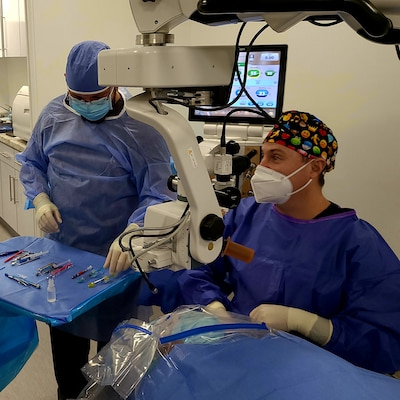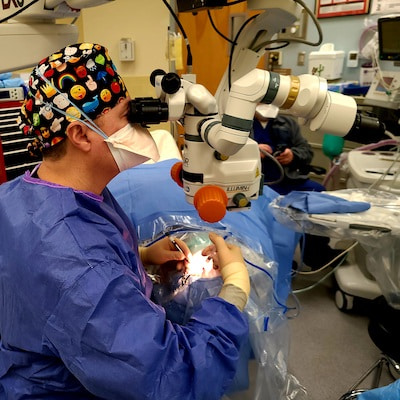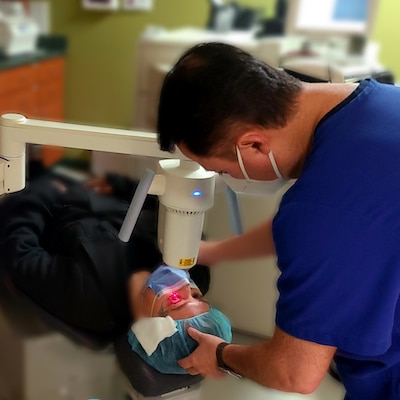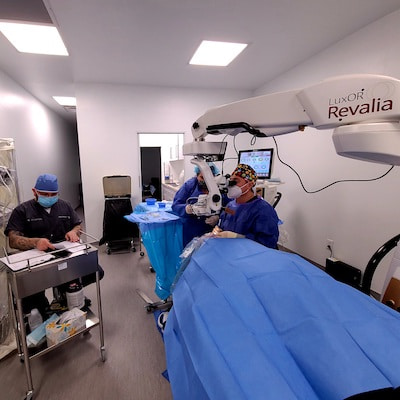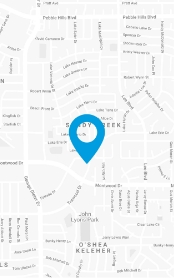Dry Eye Syndrome

Dry eye syndrome is an uncomfortable condition that affects up to 16 million people in the United States.1 While chronic dry eye is very common, many patients may not be aware that their symptoms can often be alleviated with professional treatment. The experienced eye doctors at LASIK, Cornea, and Cataract Speciality Center in El Paso can help patients achieve relief through proper diagnosis and treatment of dry eye syndrome.
What is Dry Eye Syndrome?
Dry eye syndrome, sometimes referred to as dry eye disease, is a chronic condition caused by a lack of lubrication in the eyes. Most people experience dry eyes from time to time, and this may be caused by environmental factors like seasonal allergies, dry weather, or a fan blowing on the face. For people with dry eye syndrome, this is a more regular issue that can cause discomfort to the extent that it interferes with daily activities.

Symptoms of Dry Eye
Symptoms of dry eye disease may include:
- A feeling of grittiness or that there is something in the eye
- Red eyes
- Itchy eyes
- Stinging or burning
- Blurred vision
- Stringy mucus or discharge
- Light sensitivity
- Poor night vision
- Halos
- Tired eyes
- Watery eyes (caused by an overproduction of tears in response to dryness)
Causes of Dry Eye
There are many potential causes of dry eye syndrome. Some of the most common causes include:
- Age
- Dust or wind
- Pollutants or smoke
- Wearing contact lenses for too long
- Excessive screen time
- Hormonal fluctuations
- Menopause
- Medical conditions including Sjögren’s syndrome, diabetes, rheumatoid arthritis, thyroid conditions, and other autoimmune diseases
- Certain medications including antidepressants, birth control pills, antihistamines, blood pressure medication, and diuretics
Eye Anatomy: Understanding the Tear Layers
In order to understand the types of dry eye, it is helpful to know a little about the anatomy of the eye.
Each time a person blinks, a tear film moisturizes the surface of the eyes and washes away debris. There are three layers of the tear film: an oil or lipid layer, an aqueous layer, and a mucin layer. For optimal eye health, a complex balance must be reached between the amount of tears produced and the quality of those tears.
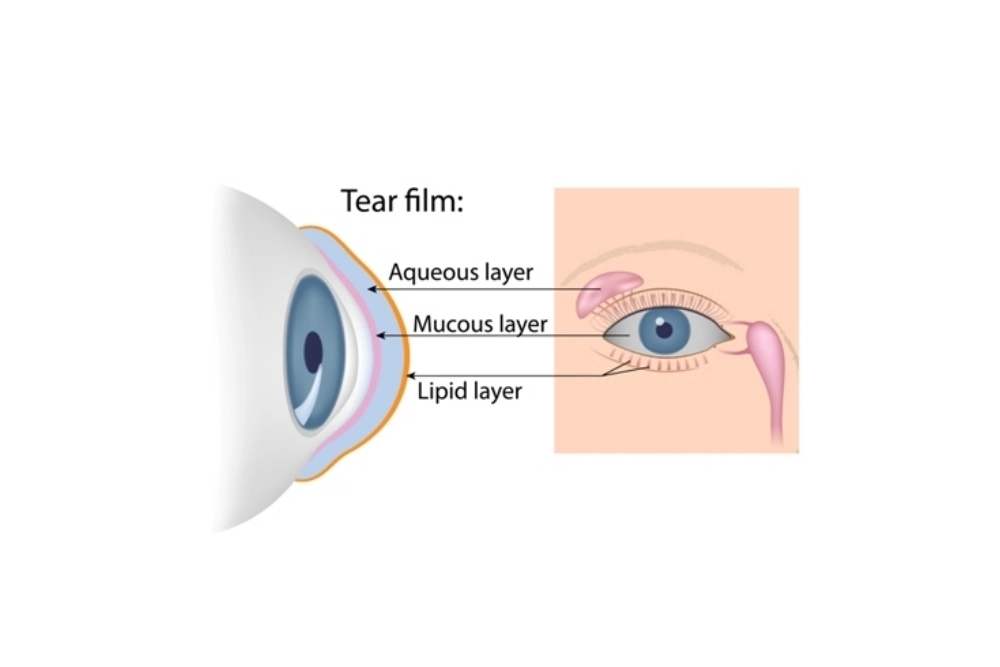
Types of Dry Eye
Aqueous-Deficient Dry Eye
Aqueous-deficient dry eye is a result of an improper balance in the water component in the tears. For patients with minor aqueous-deficient dry eye, over-the-counter artificial tears often provide symptom relief.
Evaporative Dry Eye and Meibomian Gland Dysfunction (MGD)
Evaporative dry eye is caused by a deficiency in the oil layer (or lipid layer) of the tear film. This oil layer allows the water layer of the tears to hold moisture, inadequate oil can cause tears to evaporate more quickly than they should.
The cause of evaporative dry eye is often meibomian gland dysfunction (MGD), to which up to 85% if dry eye cases may be attributed. This is a common condition where the meibomian glands that produce the lipid layer of tears become blocked. In some patients, meibomian gland dysfunction can also lead to blepharitis, a condition caused by a buildup of bacteria on or under the eyelids that can also contribute to dry eye symptoms.
How is Dry Eye Syndrome Diagnosed?
In many cases, dry eye syndrome can be diagnosed with a simple examination and review of the patient’s symptoms. Our experienced eye doctors may also perform tests to evaluate the layers of the tear film and the quality of a patients’ tears.
Home Remedies for Dry Eye Syndrome
Some people can achieve relief from dry eye symptoms through simple at-home remedies. These may include:
- A warm compress: Press a warm, moist compress (such as a washcloth) over the eyes for roughly 15 minutes.
- Environmental changes: Try making some changes to your environment to reduce dry eye symptoms. Consider turning fans away from your face, reducing screen time, or using a humidifier. You may also reduce the amount of time you wear contact lenses.
- Artificial tears: Over-the-counter lubricating drops can provide temporary relief from symptoms of dry eye disease. Be sure to look for drops without preservatives that are designed to lubricate, not just remove redness.
- Vitamins and supplements: Tear production may benefit from a diet rich in omega-3 fatty acids. There are also supplements designed specifically for eye health.
Professional Dry Eye Treatment
When at-home remedies for dry eye don’t provide adequate relief, it may be time to seek professional treatment. Our experienced eye doctors offer a range of effective dry eye treatments, which may include:
- Punctal plugs
- Prescription eye drops
- Tear gels or ointments
- Clearing any blockages in the meibomian glands
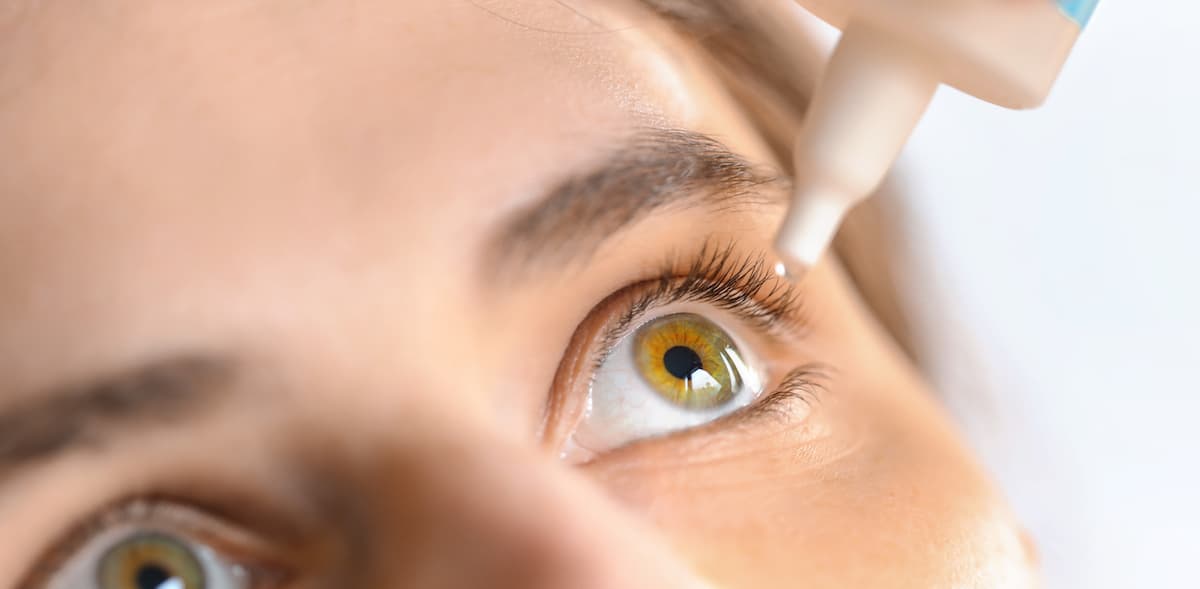
Frequently Asked Questions About Dry Eye
Is it necessary to treat dry eye syndrome?
Treating dry eye syndrome is not only about alleviating uncomfortable symptoms. Improper eye lubrication or poor tear quality can also contribute to corneal damage or recurring eye infections.
Will insurance pay for my dry eye treatment?
Dry eye syndrome is a medical condition, so some insurance policies may cover treatment. However, not all dry eye treatments are covered by medical insurance.
My eyes water a lot. How can that be dry eye?
Many patients feel that overly watery eyes and dry eye syndrome are contradictory. However, the eyes often produce an excess of tears to counteract inadequate moisture in the eyes, which can be caused by poor tear quality, rapid tear evaporation, poor tear production, or other issues related to dry eye syndrome.
Treating Families - Not Just Their Conditions
